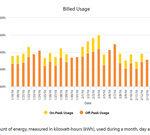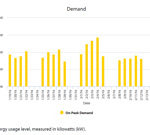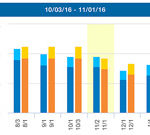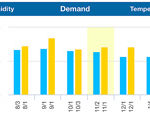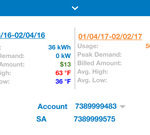"By tracking how and when you use energy, you can better predict your monthly bills and stick to a budget. That information can also help you take advantage of a pricing plan that may be able to reduce your bill."
Ana, Customer Service Representative
My Energy Usage
See detailed information about your energy use through My Account and the UniSource mobile app.
How much energy do you use each hour, day and month? Find out now through My Account under My Energy Usage and with the UniSource mobile app.
My Energy Usage displays detailed electric usage data, along with the outdoor temperature and humidity, which can impact your electric use and costs. You also can review your on-peak and off-peak usage and your “demand,” or peak level of usage.
Use this up-to-date information to learn more about your energy usage habits and to make informed choices about how to conserve energy and reduce your bill. You also can use it to help you choose the pricing plan that is right for you.

